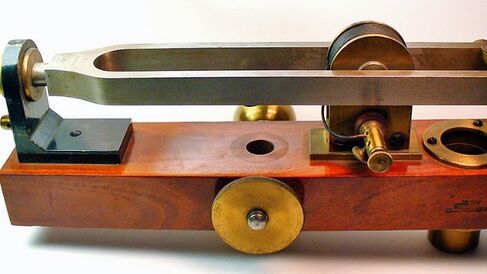Rudolph Koenig: the Pursuit of Acoustic Perfection

Have you ever wondered how a magician pulls off a trick? Is it magic - or science? Visitors will enjoy an evening of jaw-dropping trickery and sleight-of-hand inspired by the Whipple Museum's collection of historic scientific instruments and models. Magicians from Cambridge's very own Hogwarts, the Academy of Magic and Science, reveal how Science and Magic are linked in helping us understand the world around us.
With the help of astonishing tricks and interactive performances, attendees will find out some of the scientific principles behind illusion, perception and bias.
Biography
Koenig was born (appropriately enough) in the Prussian city of Koenigsberg (now the Russian city of Kaliningrad). He came from a scientific home - his father was a professor of mathematics - and his passion for acoustics and music developed when he was a young man. In 1851, after studying in Koenigsberg, he moved to work in Paris as an apprentice to the famous violin maker Jean Baptiste Vuillaume (1798-1875). It was here that he acquired his great skill working with wood and metal and also his passion for the technical principles behind instrument design. Seven years later Koenig left to set up his own business making musical instruments, but his real interest was the science of acoustics. Inspired by the publication of Herman von Helmholtz's (1821-1894) On the Sensations of Tone (1862), and in personal communication with Helmholtz, Koenig soon devoted himself to acoustical research and the design of acoustical instruments. Koenig improved many of Helmholtz's instruments as well as inventing many of his own ingenious devices.
Koenig's reputation and business were international and he had important clients across Europe and in the USA. In 1876 he participated in the international Philadelphia Centennial Exhibition with a huge collection of apparatus. He won a gold medal for this presentation and the jury remarked:
"Of the exhibit of Dr. Koenig, as a whole, it may be said that there is no other in the present International Exhibition which surpasses it in scientific interest."
Instruments
Here follows a select list of Koenig instruments in the Whipple collection. Click on the links for more information.
Torben Rees
Torben Rees, 'Rudolph Koenig: the pursuit of acoustic perfection', Explore Whipple Collections, Whipple Museum of the History of Science, University of Cambridge, 2009
